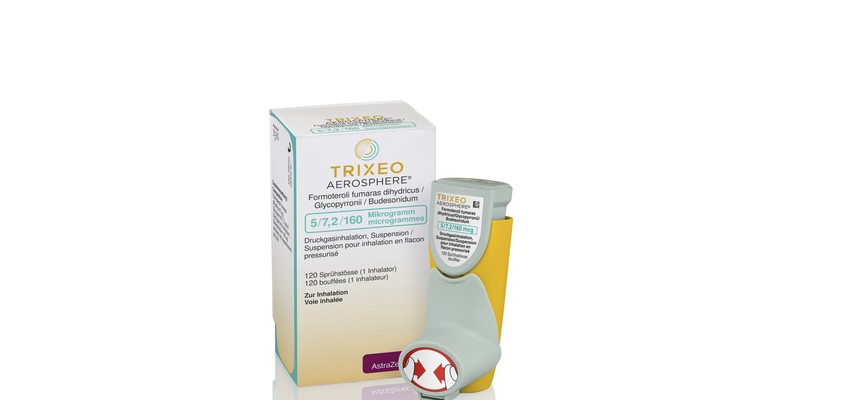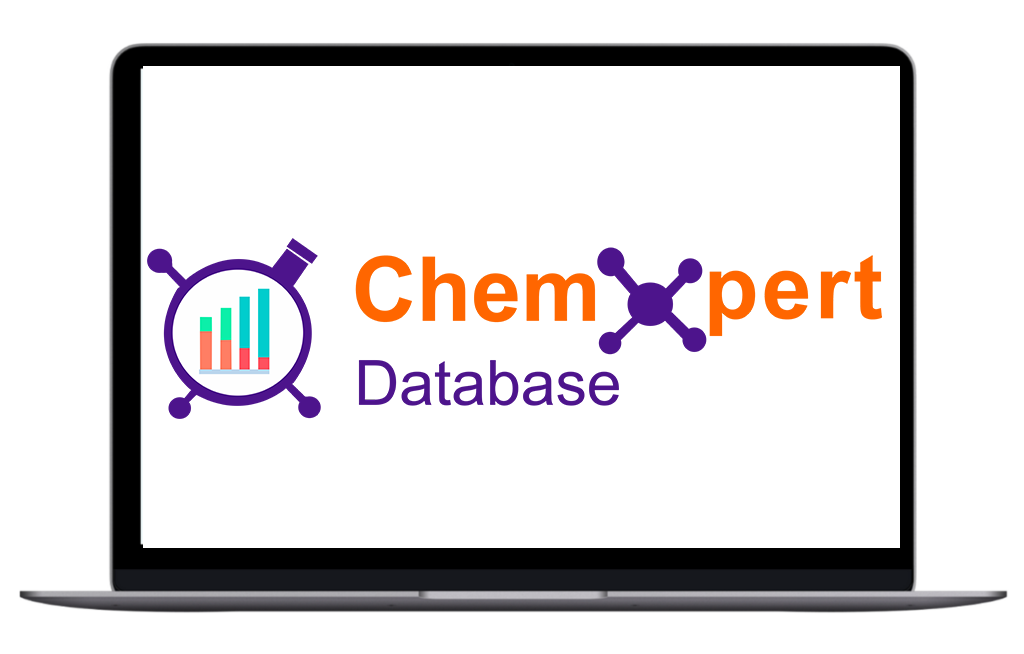
AstraZeneca’s Trixeo Aerosphere (budesonide/glycopyrronium/formoterol fumarate or BGF), already licensed for the treatment of chronic obstructive pulmonary disease (COPD) in adults, has now been approved for use in the UK with an innovative, next-generation propellant with near-zero Global Warming Potential (GWP). This is the first medicine delivered by a pressurised metered-dose inhaler (pMDI) approved with the propellant that has 99.9% lower GWP than propellants used in currently available pMDIs. Trixeo with the next-generation propellant will have a low carbon footprint, comparable to inhaled medicines that do not require a propellant. Trixeo, a fixed-dose triple-combination therapy, is marketed as Breztri Aerosphere in the US, China and Japan.
The approval by the UK Medicines and Healthcare Products Regulatory Agency (MHRA) was based on results from the next-generation propellant clinical development programme, which demonstrated bioequivalence between Trixeo with the next-generation propellant, HFO-1234ze(E), and Trixeo with the current propellant, HFA-134a. The safety and tolerability profile for Trixeo with the next-generation propellant was consistent with the known profile of the medicine.
Beyond the UK, regulatory applications for Trixeo/Breztri with the next-generation propellant are currently under review in Europe, China and additional countries.
Omar Usmani, Professor of Respiratory Medicine at Imperial College London, said: “Pressurised metered-dose inhaled medicines are essential for millions of people living with respiratory diseases in the UK. The transition of Trixeo to the propellant with near-zero Global Warming Potential means that healthcare professionals can focus on optimising outcomes for their COPD patients based on clinical need, while also supporting climate goals. Clinicians and their patients shouldn’t feel that they have to choose between the most appropriate treatment and the planet.”
Ruud Dobber, executive vice president, biopharmaceuticals business unit, AstraZeneca, said: “The UK approval of Trixeo Aerosphere with the next-generation propellant is an industry first and a major milestone in AstraZeneca’s commitment to transition our pMDI portfolio to the propellant with near-zero Global Warming Potential. Starting with Trixeo, we are addressing the needs of both patients and the environment in devastating diseases like COPD, which affects hundreds of millions of people and is a leading cause of death globally.”
Tom Keith-Roach, president, AstraZeneca UK, said: “The UK approval of Trixeo Aerosphere with the near-zero Global Warming Potential propellant marks a world ‘first’ and an important step in improving the environmental impact of our portfolio of inhaled respiratory medicines to support the NHS in achieving its net zero carbon goals. Trixeo with our next-generation propellant allows us to address the needs of both patients and the planet.”
Trixeo is the first medicine in AstraZeneca’s portfolio of pMDIs to transition to the new propellant. AstraZeneca aims to transition its wider pMDI portfolio to the near-zero GWP propellant by 2030 as part of the company’s Ambition Zero Carbon strategy. In the UK, the company plans to initiate the transition of Trixeo to the next-generation propellant in the coming months.
Chronic respiratory diseases, including COPD, affect hundreds of millions of people around the world. Respiratory inhaled medicines delivered by pMDIs account for 78% of inhaler usage globally and contribute 0.04% of global greenhouse gases. In the UK, pMDIs make up 70% of all inhaled medicines use with inhaler emissions representing 3% of the total NHS carbon footprint. Studies show that the largest environmental contribution from respiratory diseases comes from patients not being adequately controlled and resulting increased healthcare utilisation. Implementing evidence-based guidelines into clinical practice can reduce exacerbations and unscheduled healthcare utilisation, and the resulting improved patient outcomes may also decrease the overall carbon footprint associated with respiratory care.
The clinical development programme has been initiated to assess the efficacy and safety of the next-generation, near-zero Global Warming Potential propellant, HFO-1234ze(E), with the AstraZeneca portfolio of inhaled medicines delivered by pressurised metered-dose inhalers (pMDIs).
The first medicine to be assessed in the programme was Breztri/Trixeo Aerosphere (budesonide/glycopyrronium/formoterol fumarate or BGF) through in vitro, in vivo bioequivalence (PK), safety and efficacy clinical studies. The programme established bioequivalence between Breztri/Trixeo with the next-generation propellant, HFO-1234ze(E), and Breztri/Trixeo with the current propellant, HFA-134a. The safety and tolerability profile for Breztri/Trixeo with the next-generation propellant was consistent with the known profile of the medicine.
Additional studies are underway to assess the bioequivalence of HFO-1234ze(E) to the current propellant with AstraZeneca’s other medicines delivered by pMDIs.
Budesonide/glycopyrronium/formoterol fumarate (BGF), approved under the brand name Trixeo Aerosphere in the EU and Breztri Aerosphere in Japan, China and the US, is a single-inhaler, fixed-dose triple-combination of formoterol fumarate, a long-acting ß2 agonist (LABA), glycopyrronium bromide, a long-acting muscarinic antagonist (LAMA), with budesonide, an inhaled corticosteroid (ICS), and delivered via the Aerosphere pMDI. Breztri/Trixeo Aerosphere is approved to treat COPD in more than 80 countries worldwide including the US, EU, China and Japan, and has been prescribed to more than five million patients globally.
Breztri/Trixeo Aerosphere with the next-generation propellant, HFO-1234ze(E), will maintain the same indication, product strength and dosage regimen as Breztri/Trixeo Aerosphere with the current propellant, HFA-134a.
Developed and patented by Honeywell, the medical grade version of HFO-1234ze(E) is a critical propellant to enable the transition of pMDI medicines with reduced climate impact, given its near-zero GWP. AstraZeneca announced in 2022 its collaboration with Honeywell to develop respiratory inhaled medicines using the new propellant.
Through its Ambition Zero Carbon strategy, AstraZeneca is pursuing bold, science-based decarbonisation targets, accelerating progress towards net zero. The company is on track to reduce greenhouse gas (GHG) emissions from its global operations and fleet (Scope 1 and 2) by 98% by 2026 (from a 2015 baseline). AstraZeneca aims to halve its entire value chain footprint (Scope 3) by 2030, on the way to a 90% absolute emissions reduction (from a 2019 baseline) by 2045. By 2030, the Company will become carbon negative for residual emissions. AstraZeneca was one of the first seven companies globally to have its net zero targets verified by the Science-Based Targets initiative (SBTi) Corporate Net-Zero Standard.
Respiratory & Immunology, part of AstraZeneca BioPharmaceuticals, is a key disease area and growth driver to the company.
AstraZeneca is an established leader in respiratory care with a 50-year heritage and a growing portfolio of medicines in immune-mediated diseases. The company is committed to addressing the vast unmet needs of these chronic, often debilitating, diseases with a pipeline and portfolio of inhaled medicines, biologics and new modalities aimed at previously unreachable biologic targets. Its ambition is to deliver life-changing medicines that help eliminate COPD as a leading cause of death, eliminate asthma attacks and achieve clinical remission in immune-mediated diseases.

Sick and tired of always wondering if you are being asked to pay the right price for your APIs? This empowers you with the answers you need to make the right decisions in the Global API market.
Chemxpert Database is one of the biggest and most comprehensive directories of pharma and chemicals, manufacturers, suppliers and information. Provided with current information on prices, demand and transactions, it gives you instant feedback on whether you are buying what is right and at the right time.
Start using market intelligence today and allow yourself to be in control in the API market.
Check it out today and make more informed sourcing decisions! Learn More!
